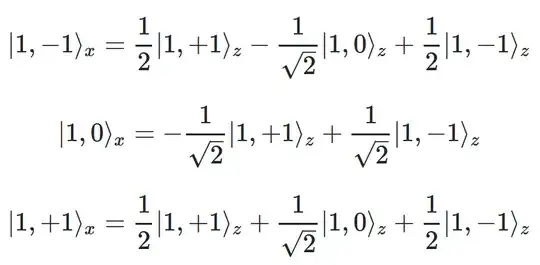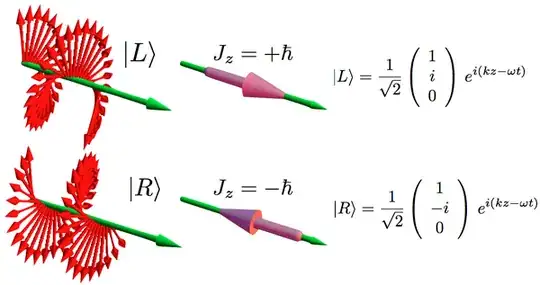I have posted here regarding this before. I always get conflicting information when I research about this stuff.
Some people say that a photon spins in or against its direction of motion…meaning if it’s going along the Z axis, from point a to b, it’ll either spin forwards or backwards with respect to its direction of propagation. Others say that it spins circularly(as in left or right with respect to its propagation direction).
Some people also say that polarization of the electric field is the same thing as spin and that the electric field is perpendicular to its direction of propagation.
You can see why I’m confused, especially because I’m finding so much conflicting information. And when it comes to polarizing lenses for a movie theater for example, I’m curious how it works on a quantum level.
I’d really appreciate if someone could tell me in plain English how this works, without using conventional terminology (some people say that left and right handed spin is just conventional and it really spins along its direction of propagation). I also see that angular momentum and orbital momentum are factors in spin as well, which I can’t figure out to be true or not.
Right now I feel like Homer Simpson when he’s clueless(derrr).
The way I learned it originally was that polarization and spin are not the same thing. Polarization is the direction of the electric field in the x and y planes(so horizontal or vertical). But I keep seeing that spin is important with a polarizer(like lenses or an lcd screen pixel). So it almost seems like spin and polarization are the same thing or at least 2 sides of the same coin.
So to sum it up: which direction is a photon actually spinning relative to its direction of propagation along the Z axis? And is polarization really the same as spin? I keep finding conflicting info after hours of googling. So when I think of photons going through a polarizer, some people say they spin left or right due to the electric field, some say that they don’t spin at all..my head hurts!
Any help would be greatly appreciated. My last post on here helped me some, but I was unable to get the info I was looking for in full. Please explain it to me as if I’m a dumb Homer. How does this actually work, in a literal sense(not conventional graph sense)?
Sorry for the long post. I know there are lots of questions. But I just need a basic reply explaining this as a whole. You don’t have to put too much effort into replying. I'm thankful for any help here. So, Thank you!
Edit: if there’s a video that you know of and you think would explain it well, please share it! I’d appreciate it. I’ve found nothing so far. So I’m not being lazy, just not smart enough to fathom it. I feel so stupid haha

